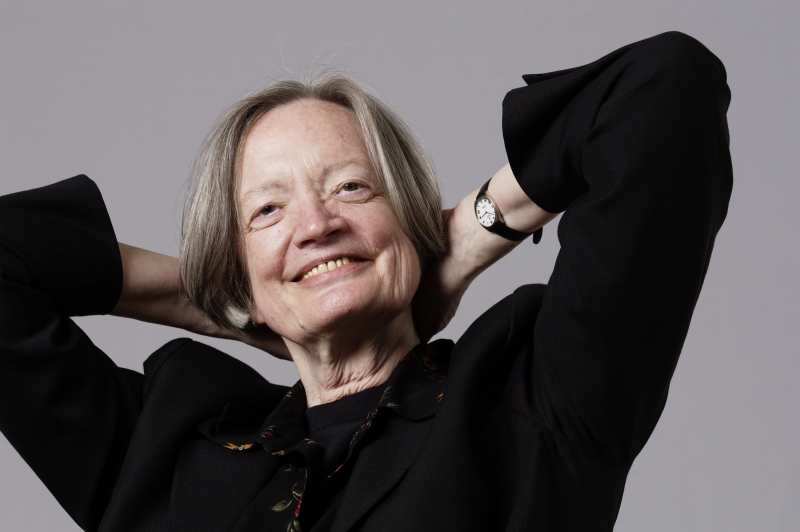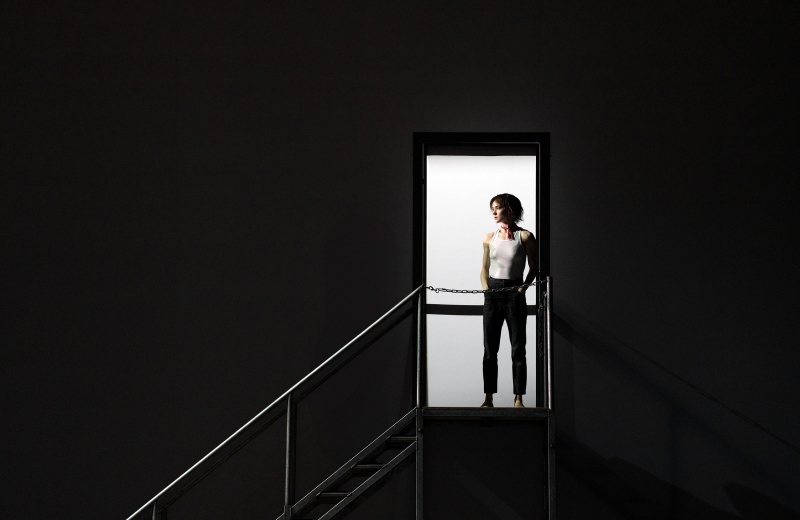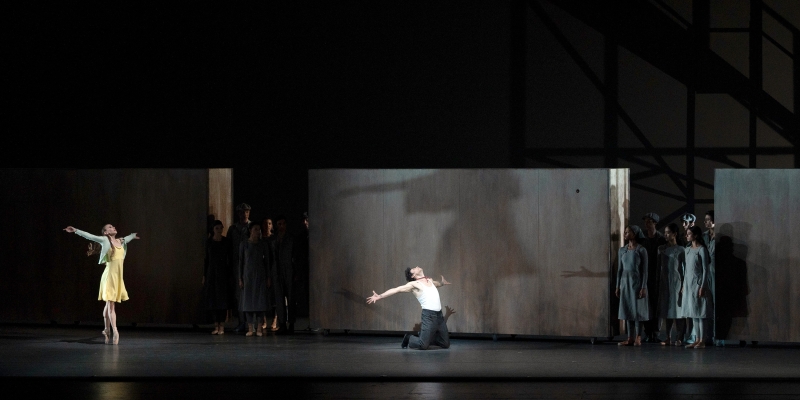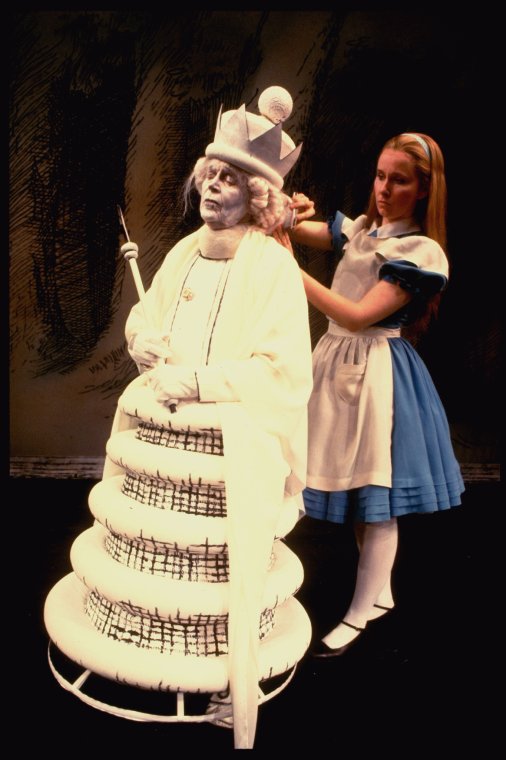Interview: Theatre Life with Jennifer Tipton
The award winning lighting designer on lighting American Ballet Theatre's Crime and Punishment and more.

Longevity is becoming rarer and rarer in the performing arts. Today’s subject Jennifer Tipton has been a lighting designer for theatre, opera, ballet, and more for over 65 years and in the process has given us a body of work that is unparalleled. Her current project American Ballet Theatre’s (ABT’s) production of Crime and Punishment will be playing at Kennedy Center in the Opera House from February 12th through the 16th.
Some of Jennifer Tipton’s lighting designs for Broadway include, To Kill A Mockingbird, Alice in Wonderland, Sophisticated Ladies, The Pirates of Penzance, and James Joyce’s The Dead. She is the recipient of two Tony Awards for her work on The Cherry Orchard and Jerome Robbins Broadway.
Her designs in dance have been seen with some of the most prestigious dance companies and choreographers. Her 40 years of dance design include works for Marion Scott, The Joffrey Ballet, Twyla Tharp, American Ballet Theatre, Mikhail Baryshnikov, Jerome Robbins, Shen Wei, José Limón, Kazuko Harbiyashi, the Dance Theatre of Harlem, The San Francisco Ballet, and the National Ballet of Canada.
As if theatre and dance were not keeping Jennifer Tipton busy enough, since the 1990s, Ms.Tipton has expanded her work to include more fine art and multimedia work. In 1996, she lit Mine, an installation for artist Rona Pondick at the Brooklyn Academy of Music's Next Wave Festival. She has also worked with sculptor Robert Gober, and designed Light Above the Hudson, a light installation for the Experimental Media Performing Arts Center building in Troy, New York. In 2010, Tipton collaborated with pianist Eteri Andjaparidze on Spectral Scriabin, a multimedia light show featuring colored lights and the music of Alexander Scriabin.
Since 1958 Jennifer Tipton has been lighting up stages with her brilliant and award winning lighting designs. I highly urge you to grab some tickets to ABT’S Crime and Punishment this week at Kennedy Center. Not only will you get to see some incredible dancing as only ABT can bring but you will also get to witness the luminescence that is the work of the goddess of light Jennifer Tipton. She is an artist that has spent her life in the theatre and beyond and is still living her theatre (and beyond) life to the fullest.
When you were growing up, did you know you wanted to work in the arts as a designer?
I had no ideas about light or any other art. I went off to Cornell majoring in physics so I could be the first person on the moon! I changed my major to English before it was all over. After graduating I came to NYC to dance.
Where did you receive your training and who would you say was your biggest champion while you were in school?
I did not go to school for lighting, I learned how to do it by stage managing and lighting the Paul Taylor Company on tour and at home. Before working with the Taylor Co, I was a rehearsal mistress for a company – The Merry Go Rounders – who danced for children. It was my job to see performances and critique the dancers. I looked at the bigger picture – it was light. I fell in love with it and I have been in love with it ever since. I worked with Tom Skelton as a secretary, as assistant, and as an associate and learned much of my craft from him, my hero.
What was your first professional job as a lighting designer?
I went to the museum in Richmond, VA, with the dancer, Don Redlich. There I was admonished for leaving the sidelight open, hitting the wings. I chose not to change my focus which did not please the person in charge of the stage. And I did get a review.

Crime and Punishment. Photo by Emma Zordan.
Can you please tell us something about your lighting concepts for ABT’s Crime & Punishment?
My main aim was to help the audience understand the story that we were telling – necessarily somewhat separate from the story of Crime & Punishment. I set out to make each scene clear and legible. I always like to have a beginning, middle, and end. In C & P, the scale of the work made that a true challenge.

Crime and Punishment. Photo by Emma Zordan.
From first meeting to first performance, how long was the process of lighting Crime & Punishment?
We had very little time for this piece. We spent a week in Purchase setting the lighting without dancers and looking at projections. I visited rehearsals as much as possible and as it turned out there was never a proper run through allowing me to see the whole piece – other than on video. We had about a week with stage rehearsals but only four of those were with the dancers and only two of them with dancers in costume. When we finally had a run through, I was amazed to find that the lighting was in better shape than I had ever dreamed.
What would you say is the biggest difference between lighting a theatrical piece versus lighting something for dance?
For me the biggest difference is that there are never previews for dance and often a series of previews for theatrical pieces. I tend to learn a great deal from watching the performance for an audience without a headset. I never wear a headset to the board during a performance. The biggest difference between a dance and a theatrical piece is the use of the space. Obviously in a dance the space used is constantly changing and the light must therefore accommodate a larger space or be constantly changing with the dancers. In a theatrical piece the actors tend to impart significant information standing in place and therefore the light is relatively still while the actors are speaking. This difference leads to a rather large difference in the way that I think about the light in the space.

Photo by Martha Swope.
You were the lighting designer for the late great Eva Le Gallienne’s production of Alice in Wonderland. Can you please talk about the experience of working with one of the greatest grandames of the American theatre on that show?
Working on the lighting of Alice in Wonderland was a great pleasure for me. Eva Le Gallienne’s ideas about light were amazingly fresh and up to date. On the other hand, there were times when her idea was distinctly old fashioned and that led me to learn a lot from her as I worked diligently to update the light in a way that satisfied her old-fashioned view.
For those of us in the industry that remember when shows were just light with many source four and par lamps and no moving instruments, do you feel modern day designers are getting a little lazy in the way they tell the story through light because of all the snazzy things that are now available?
I have always said that there is only one right place for a light and that if it needs to be two colors or have two purposes it demands a compromise – either two lights splitting that “right” place or one light in the “right” place and another in the “wrong place. This idea is now no longer possible with the large moving lights taking up all that space. Also, the practice of mixing color to give a richer effect is no longer possible. But I use much more color now than I have before the development of LED equipment that brings with them a host of colors. I am also often happy to have a single light that can be used for two-plus purposes. So my answer is no. Choices are just as difficult if not more so since the arrival of all those “snazzy” things.
Can you please pick a couple of favorite shows you have designed for both theatre and dance?
I would say that my favorite theater piece is one of the last– To Kill A Mockingbird. The favorite dance piece is one of my earliest - Celebration – The Art Of The Pas De Deux that Jerome Robbins put together for the Spoleto Arts Festival in Italy. As I think back on it, I remember that I felt that it was perfect except for one color that I wanted to change in the middle of the performance, but it was unreachable. Wish I’d had an LED fixture then!
What does 2025 hold in store for you workwise?
I am pretty much retired at this point. For now, my list includes working with the Wooster Group and lighting a concert of St Luke’s Orchestra at BAC in May.
Special thanks to Kennedy Center's grand jete Senior Press Representative Brittany Laeger for her assistance in coordinating this interview.
Theatre Life logo designed by Kevin Laughon.
Comments
Videos


.gif)